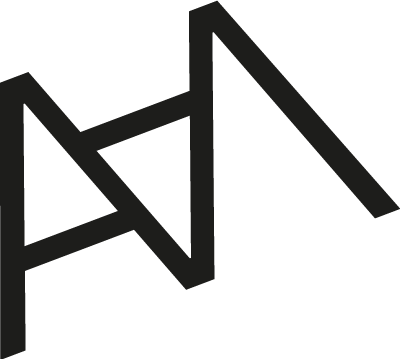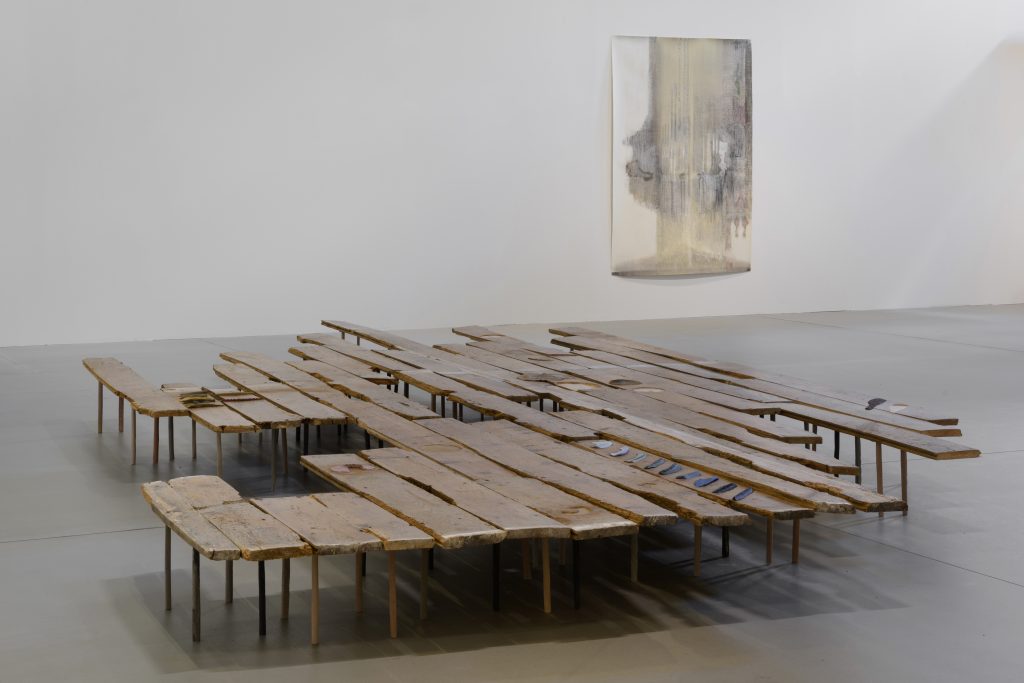
Between April and September 2024, Patricia Dauder presented Unform[1] in the rooms of Artium Museoa, an exhibition curated by Catalina Lozano that included a large set of works, the oldest of which dated back to 2005, while some of the most recent were created for the occasion. Such an extensive period – almost twenty years of work – could lead one to think that this was a retrospective, and Unform certainly had a certain recapitulatory nature about it, albeit not an entirely conventional one. For despite the fact that it brought together works from the past two decades, the exhibition did not strive to illustrate the evolution of Dauder’s artistic practice over time. Rather, by selecting the pieces and the multiple relationships that these could potentially establish with each other, its intention was to capture the foundations that remain constant in this artist’s work, tenaciously crossing a variety of formats, different themes and successive eras to form the core of her creative practice.
With this in mind, the artist and curator joined forces to transform the group of works selected for Unform into a large installation in which, thanks to a carefully thought-out arrangement, each work assumes a meaning of its own, while at the same time contributing, with the same intensity, its particular vibration to the constellation of evocations and resonances emanating from the whole. In this way, Unform managed to conjugate Patricia Dauder’s interests, methods and visual language in all their declensions.
Dauder’s work processes are long and involve the preparatory repetition of gestures or procedures, the results of which are to a certain extent autonomous, given that they remain (at least in part) outside the artist’s control. Consequently, there is a certain component of sedimentation and sensitive memory inherent in her work: a state of “trace” or “clue” present in many of her works, be they sculptures, paintings, audiovisual pieces or any other format. This in turn entails the incorporation of a narrative element that adds to the multiple layers of meaning that characterise her practice.
Similarly, the meanings that Dauder’s works refer to, as if they were visual clues, endowed with an evocative capacity that is both intense and delicate, are firmly anchored in the sensitive – although they often seem to have slipped beyond the expressive limits of language – and yet they suggest the existence of something that remains hidden, somewhere beyond the reach of the human perceptive apparatus. This concealment is sometimes physical and perceptible, as occurs in Calendario #6 (She) and Calendario #4, from 2018. At other times, what the artist does not show lacks physical materiality. The large-scale sculpture Balsa (Raft), from 2012, could easily be understood as a complete work. However, especially when its title is discovered, it is not difficult to imagine that it is a vessel, or rather its remains: the enormous piece of a ship whose proportions, given the size of what we see, would be truly monumental.
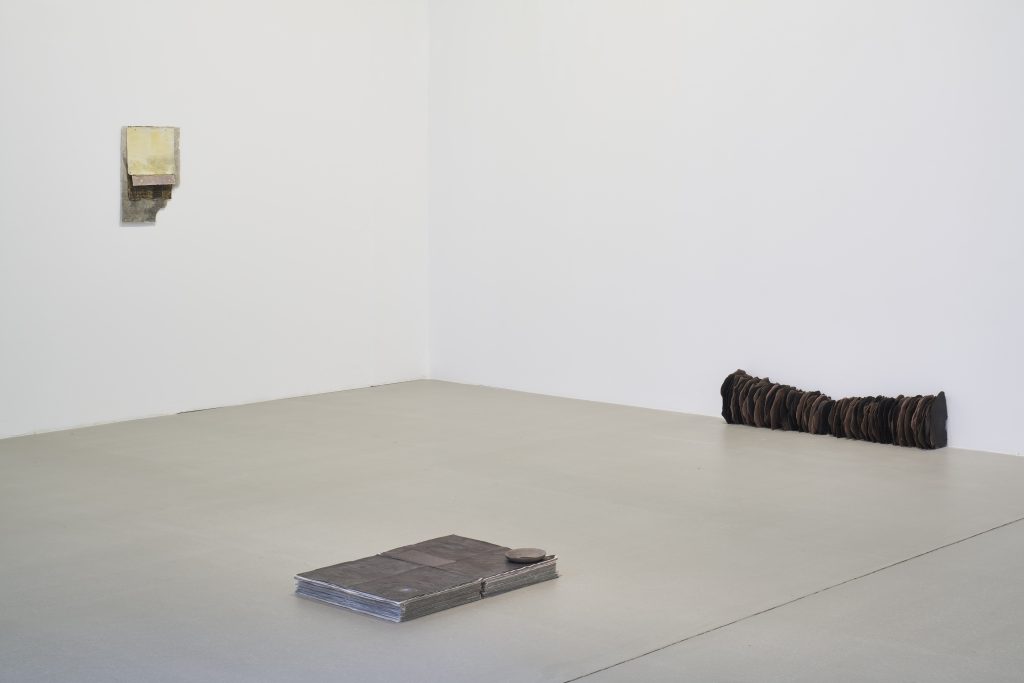
The layers of meaning are even more complex in Finning, a sculpture from 2019 made up of a series of fired, burnt clay plates.[2] The shape of these plates, leaning against the wall, can be easily recognised as an allusion to a cetacean’s fin, even more so when combined with the term that gives the work its title, derived from the English word “fin”. However, other connotations of this work are more dramatic and less innocent: finning in English refers to a devastating practice, common in some areas of Asia, in which the fins of sharks are cut off and then they are thrown back alive into the sea, where they soon die, stranded in the depths, unable to swim.
Patricia Dauder points out that these gestures of concealment are deliberate, given that she is not interested in the full meaning of her works being grasped or consumed immediately at first glance, but rather the opposite: that the task of extracting the meaning of each work requires a certain amount of time and will on the part of the viewer. The echoes evoked by many of her works are thus not exhausted in the moments of mere visual apprehension, but instead continue to expand after the works are no longer visible to those who strive to decipher them.
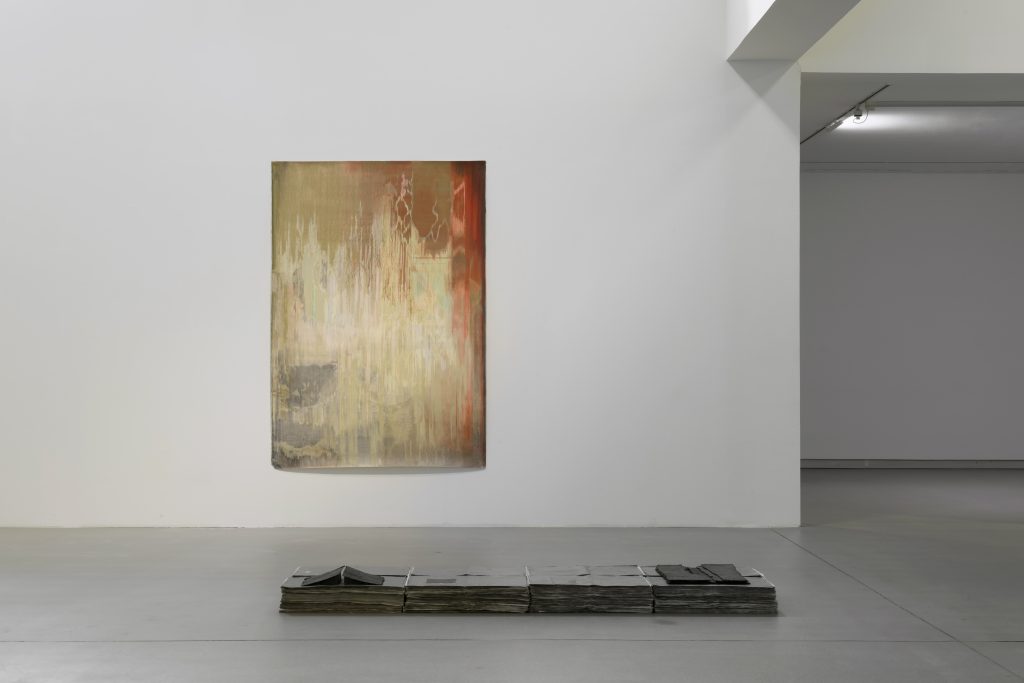
This effort of interpretation, however, does not always lead to an unequivocal answer. Sometimes it is difficult to define exactly what Dauder’s works suggest, as if the chain of transmission of meaning had lost a few links before reaching us, or as if the artist was pointing with her work to worlds for which we lack the words to describe. The subtle sensation of a perceptual “dislocation” that can then be unchained is another constant in Patricia Dauder’s practice, as well as one of her most effective tactics to provoke the involvement of those who view her works in an attitude of active interpretation.
On a conceptual level, this impression often stems from the many resonances conveyed by her works, which are not always immediately apparent – it takes some effort to discover them – or which are linked to emotions rather than concepts, making them difficult to describe verbally. On a formal level, the artist’s tireless exploration into the possibilities of the various media and formats with which she works results in contrasts that can cause a certain initial irritation, given that they steer the processes of perception of her works towards unconventional directions. For example, Dauder thus uses film, the medium par excellence of the dynamic image, to create a work of still images, while making movement one of the main themes of a slide projection. She presents a series of sheets, all of them graphically intervened, to form a work superimposed in layers, making them simultaneously perceptible and partially inaccessible. Or she constructs a pedestal, a characteristic element of monumental architecture or sculpture – intended to be permanent – by using a material as fragile as wax, similarly undermining its three-dimensional state by placing it next to a wall, etc. In one way or another, a visit to Unform in the rooms of the Artium Museoa was always enriched by a wealth of sensations, visual perceptions and suggestive associations of meaning. One only needed to perform a small act of faith to enjoy its rewards, which consisted in accepting that perhaps not everything that Patricia Dauder wanted to show in the rooms could be perceived at a phenomenological level and had to be appreciated through many other senses.
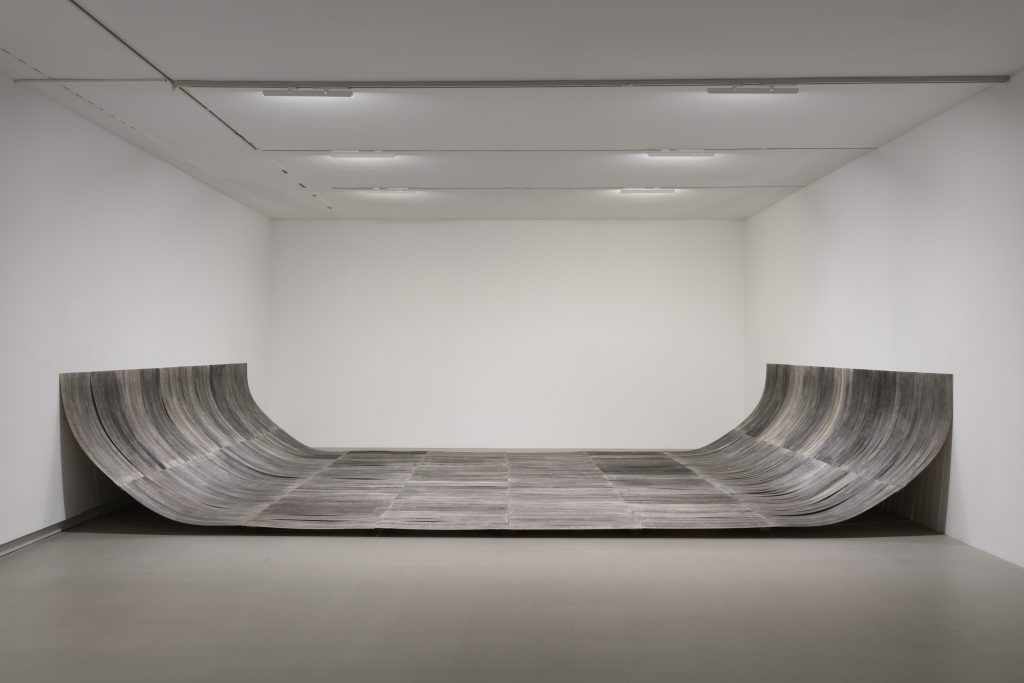
*“[Amongst the miscellaneous papers of Thomas Browne] there is also to be found a catalogue of remarkable books, Musæum Clausum or Biblioteca Abscondita, listing pictures, antiquities, and sundry singular items that may have formed part of a collection put together by Browne but were more likely products of his imagination, the inventory of a treasure house that existed purely in his head and to which there is no access except through the letters on the page.” W. G. Sebald, Los anillos de Saturno [The Rings of Saturn] (translated by Carmen Gómez and Georg Pichler from the 1995 German original), Barcelona: Debate, 2000, p. 277.
[1] Patricia Dauder – Unform, Artium Museoa, Museum of Contemporary Art of the Basque Country, Vitoria-Gasteiz, from 26 April to 29 September 2024, curated by Catalina Lozano.
[2] I am grateful to Patricia Dauder for sharing this and many other aspects of her work with me in conversation.
